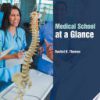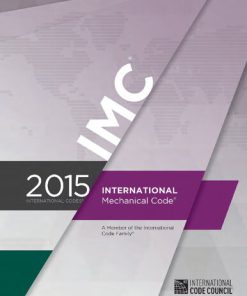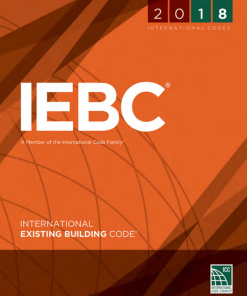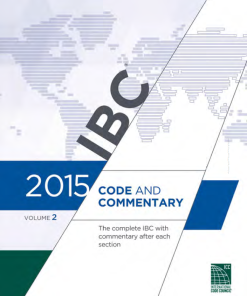Let s Code It 2022 2023 Code Edition 3rd Edition by Shelley Safian, Mary Elizabeth Johnson ISBN 9781265150808 126515080X
$50.00 Original price was: $50.00.$25.00Current price is: $25.00.
Let s Code It 2022 2023 Code Edition 3rd Edition by Shelley Safian, Mary Elizabeth Johnson – Ebook PDF Instant Download/Delivery: 9781265150808 ,126515080X
Full download Let s Code It 2022 2023 Code Edition 3rd Edition after payment

Product details:
ISBN 10: 126515080X
ISBN 13: 9781265150808
Author: Shelley Safian, Mary Elizabeth Johnson
Let s Code It 2022 2023 Code Edition 3rd Edition Table of contents:
Part I: Medical Coding Fundamentals
Chapter 1: Introduction to the Languages of Coding
1.1: The Purpose of Coding
1.2: Diagnosis Coding
1.3: Procedure Coding
1.4: Equipment and Supplies
Chapter Summary and Review
Chapter 2: Abstracting Clinical Documentation
2.1: For Whom You Are Reporting
2.2: The Process of Abstracting
2.3: Deconstructing Diagnostic Statements
2.4: Identifying Manifestations, Co-morbidities, and Sequelae
2.5: Reporting External Causes
2.6: Deconstructing Procedural Statements
2.7: How to Query
Chapter Summary and Review
Chapter 3: The Coding Process
3.1: The Coding Process Overview
3.2: The Alphabetic Indexes
3.3: The Tabular List, Main Section, Tables, and Alphanumeric Section
3.4: The Official Guidelines
3.5: Confirming Medical Necessity
Chapter Summary and Review
Part II: Reporting Diagnoses
Chapter 4: Introduction to ICD-10-CM
4.1: Introduction and Official Conventions
4.2: ICD-10-CM Official Guidelines for Coding and Reporting
4.3: The Alphabetic Index and Ancillaries
4.4: The Tabular List
4.5: Which Conditions to Code
4.6: Putting It All Together: ICD-10-CM Basics
Chapter Summary and Review
Chapter 5: Coding Infectious Diseases
5.1: Infectious and Communicable Diseases
5.2: Bacterial Infections
5.3: Viral Infections
5.4: Parasitic and Fungal Infections
5.5: Infections Caused by Several Pathogens
5.6: Immunodeficiency Conditions
5.7: Septicemia and Other Blood Infections
5.8: Antimicrobial Resistance
Chapter Summary and Review
Chapter 6: Coding Neoplasms
6.1: Screening and Diagnosis
6.2: Abstracting the Details about Neoplasms
6.3: Reporting the Neoplastic Diagnosis
6.4: Neoplasm Chapter Notes
6.5: Admissions Related to Neoplastic Treatments
Chapter Summary and Review
Chapter 7: Coding Conditions of the Blood and Immunological Systems
7.1: Reporting Blood Conditions
7.2: Coagulation Defects and Other Hemorrhagic Conditions
7.3: Conditions Related to Blood Types and the Rh Factor
7.4: Disorders of White Blood Cells and Blood-Forming Organs
7.5: Disorders Involving the Immune System
Chapter Summary and Review
Chapter 8: Coding Endocrine Conditions
8.1: Disorders of the Thyroid Gland
8.2: Diabetes Mellitus
8.3: Diabetes-Related Conditions
8.4: Other Endocrine Gland Disorders
8.5: Nutritional Deficiencies and Weight Factors
8.6: Metabolic Disorders
Chapter Summary and Review
Chapter 9: Coding Mental, Behavioral, and Neurologic Disorders
9.1: Conditions That Affect Mental Health
9.2: Mood (Affective) and Nonmood (Psychotic) Disorders
9.3: Anxiety, Dissociative, Stress-Related, Somatoform, and Other Nonpsychotic Mental Disorders
9.4: Physiological Conditions Affecting the Central Nervous System
9.5: Physiological Conditions Affecting the Peripheral Nervous System
9.6: Pain Management
Chapter Summary and Review
Chapter 10: Coding Dysfunction of the Optical and Auditory Systems
10.1: Diseases of the External Optical System
10.2: Diseases of the Internal Optical System
10.3: Other Conditions Affecting the Eyes
10.4: Dysfunctions of the Auditory System
10.5: Causes, Signs, and Symptoms of Hearing Loss
Chapter Summary and Review
Chapter 11: Coding Cardiovascular Conditions
11.1: Heart Conditions
11.2: Cardiovascular Conditions
11.3: Hypertension
11.4: Manifestations of Hypertension
11.5: CVA and Cerebral Infarction
11.6: Sequelae of Cerebrovascular Disease
Chapter Summary and Review
Chapter 12: Coding Respiratory Conditions
12.1: Underlying Causes of Respiratory Disease
12.2: Disorders of the Respiratory System
12.3: Pneumonia and Influenza
12.4: Chronic Respiratory Disorders
12.5: Reporting Tobacco Involvement
12.6: Respiratory Conditions Requiring External Cause Codes
Chapter Summary and Review
Chapter 13: Coding Digestive System Conditions
13.1: Diseases of Oral Cavity and Salivary Glands
13.2: Conditions of the Esophagus and Stomach
13.3: Conditions Affecting the Intestines
13.4: Dysfunction of the Digestive Accessory Organs and Malabsorption
13.5: Reporting the Involvement of Alcohol in Digestive Disorders
Chapter Summary and Review
Chapter 14: Coding Integumentary Conditions
14.1: Disorders of the Skin
14.2: Disorders of the Nails, Hair, Glands, and Sensory Nerves
14.3: Lesions
14.4: Prevention and Screenings
Chapter Summary and Review
Chapter 15: Coding Muscular and Skeletal Conditions
15.1: Arthropathies
15.2: Dorsopathies and Spondylopathies (Conditions Affecting the Joints of the Spine)
15.3: Soft Tissue Disorders
15.4: Musculoskeletal Disorders from Other Body Systems
15.5: Pathological Fractures
Chapter Summary and Review
Chapter 16: Coding Injury, Poisoning, and External Causes
16.1: Reporting External Causes of Injuries
16.2: Traumatic Injuries
16.3: Using Seventh Characters to Report Status of Care
16.4: Using the Table of Drugs and Chemicals
16.5: Adverse Effects, Poisoning, Underdosing, and Toxic Effects
16.6: Reporting Burns
16.7: Abuse, Neglect, and Maltreatment
16.8: Complications of Care
Chapter Summary and Review
Chapter 17: Coding Genitourinary, Gynecology, Obstetrics, Congenital, and Pediatrics Conditions
17.1: Renal and Urologic Malfunctions
17.2: Diseases of the Male Genital Organs
17.3: Sexually Transmitted Diseases
17.4: Gynecologic Care
17.5: Routine Obstetrics Care
17.6: Pregnancies with Complications
17.7: Neonates and Congenital Anomalies
Chapter Summary and Review
Chapter 18: Factors Influencing Health Status (Z Codes)
18.1: Preventive Care
18.2: Early Detection
18.3: Genetic Susceptibility
18.4: Observation
18.5: Continuing Care and Aftercare
18.6: Organ Donation
18.7: Resistance to Antimicrobial Drugs
18.8: Z Codes as First-Listed/Principal Diagnosis
18.9: Social Determinants of Health
Chapter Summary and Review
Chapter 19: Inpatient (Hospital) Diagnosis Coding
19.1: Concurrent and Discharge Coding
19.2: Official Coding Guidelines
19.3: Present-On-Admission Indicators
19.4: Diagnosis-Related Groups
19.5: Uniform Hospital Discharge Data Set
Chapter Summary and Review
Chapter 20: Diagnostic Coding Capstone
Part III: Reporting Physician Services and Outpatient Procedures
Chapter 21: Introduction to CPT
21.1: Abstracting for Procedure Coding
21.2: CPT Code Book
21.3: Understanding Code Descriptions
21.4: Notations and Symbols
21.5: Official Guidelines
21.6: Category II and Category III Coding
Chapter Summary and Review
Chapter 22: CPT and HCPCS Level II Modifiers
22.1: Modifiers Overview
22.2: Personnel Modifiers
22.3: Anesthesia Physical Status Modifiers
22.4: Ambulatory Surgery Center Hospital Outpatient Use Modifiers
22.5: Anatomical Site Modifiers
22.6: Service-Related Modifiers
22.7: Sequencing Multiple Modifiers
22.8: Supplemental Reports
Chapter Summary and Review
Chapter 23: CPT Evaluation and Management Coding
23.1: What Are E/M Codes?
23.2: Location Where the E/M Services Were Provided
23.3: Relationship Between Provider and Patient
23.4: Types of E/M Services
23.5: Preventive Medicine Services
23.6: Abstracting the Physician’s Notes
23.7: E/M in the Global Surgical Package
23.8: E/M Modifiers and Add-On Codes
23.9: Special Evaluation Services
23.10: Coordination and Management Services
Chapter Summary and Review
Chapter 24: CPT Anesthesia Section
24.1: Types of Anesthesia
24.2: Coding Anesthesia Services
24.3: Anesthesia Guidelines
24.4: Time Reporting
24.5: Qualifying Circumstances
24.6: Special Circumstances
24.7: HCPCS Level II Modifiers
Chapter Summary and Review
Chapter 25: CPT Surgery Section
25.1: Types of Surgical Procedures
25.2: The Surgical Package
25.3: Global Period Time Frames
25.4: Unusual Services and Treatments
25.5: Integumentary System
25.6: Musculoskeletal System
25.7: Respiratory System
25.8: Cardiovascular System
25.9: Digestive System
25.10: Urinary System
25.11: The Genital Systems: Male and Female
25.12: Nervous System
25.13: The Optical and Auditory Systems
25.14: Organ Transplantation
25.15: Operating Microscope
Chapter Summary and Review
Chapter 26: CPT Radiology Section
26.1: Types of Imaging
26.2: Purposes for Imaging
26.3: Technical vs. Professional
26.4: Number of Views
26.5: Procedures With or Without Contrast
26.6: Diagnostic Radiology
26.7: Mammography
26.8: Bone and Joint Studies
26.9: Radiation Oncology
26.10: Nuclear Medicine
Chapter Summary and Review
Chapter 27: CPT Pathology & Lab Section
27.1: Specimen Collection and Testing
27.2: Testing Methodology and Desired Results
27.3: Panels
27.4: Blood Test Documentation
27.5: Clinical Chemistry
27.6: Molecular Diagnostics
27.7: Immunology, Microbiology, and Cytopathology
27.8: Surgical Pathology
27.9: Modifiers for Laboratory Coding
27.10: Pathology and Lab Abbreviations
Chapter Summary and Review
Chapter 28: CPT Medicine Section
28.1: Immunizations
28.2: Injections and Infusions
28.3: Psychiatry, Psychotherapy, and Biofeedback
28.4: Dialysis and Gastroenterology Services
28.5: Ophthalmology and Otorhinolaryngologic Services
28.6: Cardiovascular Services
28.7: Pulmonary
28.8: Allergy and Clinical Immunology
28.9: Neurology and Neuromuscular Procedures
28.10: Physical Medicine and Rehabilitation
28.11: Acupuncture, Osteopathic, and Chiropractic Treatments
28.12: Other Services Provided
Chapter Summary and Review
Chapter 29: Physicians’ Services Capstone
Part IV: DMEPOS & Transportation
Chapter 30: HCPCS Level II
30.1: HCPCS Level II Categories
30.2: The Alphabetic Index
30.3: The Alphanumeric Listing Overview
30.4: Symbols and Notations
30.5: Appendices
Chapter Summary and Review
Chapter 31: DMEPOS and Transportation Capstone
Part V: Inpatient (Hospital) Reporting
Chapter 32: Introduction to ICD-10-PCS
32.1: The Purpose of ICD-10-PCS
32.2: The Structure of ICD-10-PCS Codes
32.3: The ICD-10-PCS Book
32.4: ICD-10-PCS General Conventions
32.5: Selection of Principal Procedure
Chapter Summary and Review
Chapter 33: ICD-10-PCS Medical and Surgical Section
33.1: Medical/Surgical Section/Body Systems: Characters 1 and 2
33.2: Medical/Surgical Root Operations: Character 3
33.3: Medical/Surgical Body Parts: Character 4
33.4: Medical/Surgical Approaches: Character 5
33.5: Medical/Surgical Devices: Character 6
33.6: Medical/Surgical Qualifiers: Character 7
33.7: Multiple and Discontinued Procedures in Medical and Surgical Cases
33.8: Medical/Surgical Coding: Putting It All Together
Chapter Summary and Review
Chapter 34: Obstetrics Section
34.1: Obstetrics Section/Body System: Characters 1 and 2
34.2: Obstetrics Root Operations: Character 3
34.3: Obstetrics Body Parts: Character 4
34.4: Obstetrics Approaches: Character 5
34.5: Obstetrics Devices: Character 6
34.6: Obstetrics Qualifiers: Character 7
34.7: Obstetrics Coding: Putting It All Together
Chapter Summary and Review
Chapter 35: Placement through Chiropractic Sections
35.1: Reporting Services from the Placement Section
35.2: Reporting Services from the Administration Section
35.3: Reporting Services from the Measurement and Monitoring Section
35.4: Reporting Services from the Extracorporeal or Systemic Assistance and Performance Section
35.5: Reporting Services from the Extracorporeal or Systemic Therapies Section
35.6: Reporting Osteopathic Services
35.7: Reporting from the Other Procedures Section
35.8: Reporting Inpatient Chiropractic Services
35.9: Sections 2–9: Putting It All Together
Chapter Summary and Review
Chapter 36: Imaging, Nuclear Medicine, and Radiation Therapy Sections
36.1: Reporting from the Imaging Section
36.2: Reporting from the Nuclear Medicine Section
36.3: Reporting from the Radiation Therapy Section
36.4: Sections B, C, and D: Putting It All Together
Chapter Summary and Review
Chapter 37: Physical Rehabilitation and Diagnostic Audiology through New Technology Sections
37.1: Reporting Services from the Physical Rehabilitation and Diagnostic Audiology Section
37.2: Reporting Services from the Mental Health Section
37.3: Reporting from the Substance Abuse Treatment Section
37.4: Reporting from the New Technology Section
37.5: Sections F–X: Putting It All Together
Chapter Summary and Review
Chapter 38: Inpatient Coding Capstone
Part VI: Reimbursement, Legal, and Ethical Issues
Chapter 39: Reimbursement
39.1: The Role of Insurance in Health Care
39.2: Types of Insurance Plans
39.3: Methods of Compensation
39.4: NCCI Edits and NCD/LCD
39.5: Place-of-Service and Type-of-Service Codes
39.6: Organizing Claims: Resubmission, Denials, and Appeals
Chapter Summary and Review
Chapter 40: Introduction to Health Care Law and Ethics
40.1: Sources for Legal Guidance
40.2: Rules for Ethical and Legal Coding
40.3: False Claims Act
40.4: Health Insurance Portability and Accountability Act (HIPAA)
40.5: Health Care Fraud and Abuse Control Program
40.6: Codes of Ethics
40.7: Compliance Programs
People also search for Let s Code It 2022 2023 Code Edition 3rd Edition:
4 digit code in write a letter
let’s be cops code 4
3 letter code resident evil 2
let it code
2 codes
You may also like…
Housekeeping & Leisure - Interior Design & Decoration
Engineering - Mechanical Engineering & Dynamics
International Mechanical Code 2015th Edition International Code Council
Engineering
2015 IBC International Building Code Code Commentary Volume 1 1st Edition International Code Council
Housekeeping & Leisure - Interior Design & Decoration
Engineering - Construction & Building Trades
2023 National Electrical Safety Code 2023rd Edition Accredited Standards Committee
Engineering - Construction & Building Trades
Housekeeping & Leisure - Interior Design & Decoration
2015 IBC International Building Code Code Commentary Volume 2 1st Edition International Code Council
Romance - Contemporary Romance
Let it Go Let it Snow Let it Grow 1st Edition by Maia Matiff 9798868171383











